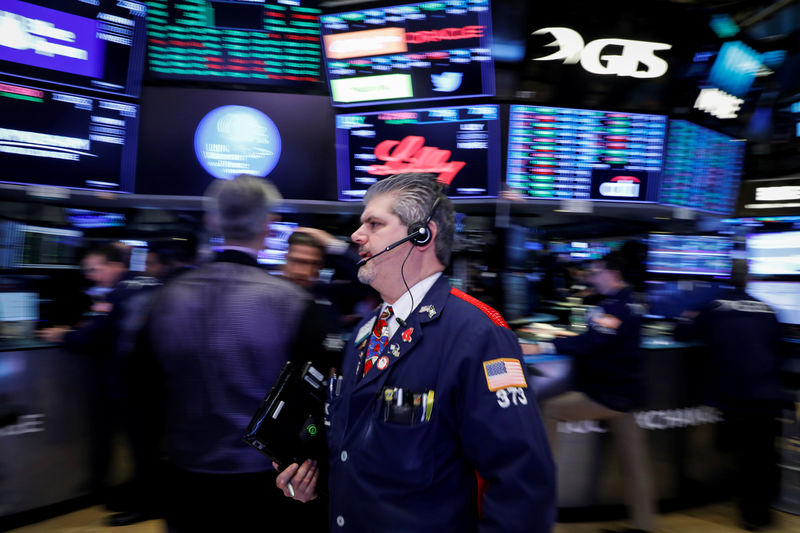 © Reuters. Traders work on the floor of the NYSE in New York
© Reuters. Traders work on the floor of the NYSE in New YorkBy Helen Reid
LONDON (Reuters) – A marked shift toward protectionism by President Donald Trump caused sharp outflows from U.S. large-cap stocks this week, Bank of America (NYSE:) Merrill-Lynch (BAML) strategists said on Friday.
Investors rushed into government bonds and other safer assets amid rising fears of an international trade war after Trump’s plans for tariffs on imported steel and aluminum met barbed responses from allies and trade bodies.
Overall, investors pulled money out of equities, though the damage was mostly in the United States where $10.3 billion flowed out of U.S. equity funds, while global equity funds suffered just $0.4 billion of outflows, according to EPFR data cited by BAML.
“As QE ends, protectionism begins,” wrote BAML strategists.
The risk-off mood drove investors into money market funds, pushing assets up to $2.9 trillion – the highest level since 2010. Safe-haven gold also drew in $0.4 billion.
U.S. small caps were sheltered from the storm, the only U.S. sector to draw inflows, albeit tiny at $0.03 billion. U.S. large-cap stocks lost $10.1 billion.
Flows into Japanese equities continued apace, with the market drawing in $4.1 billion in its 14th straight week of inflows, the longest streak of inflows since 2013. European stock funds managed to draw in $0.1 billion.
Trump’s exemption of Canada and Mexico from the final tariffs announced late on Thursday soothed investors somewhat, and news the U.S. president would meet with North Korean President Kim Jong Un caused crude prices to rise.
“US-DPRK detente suggests protectionism can remain at “bark” not “bite” stage,” argued strategists.
Among large economies, China has the highest dependency on exports to the United States and therefore looks the most vulnerable to U.S. protectionism.
The Hong Kong dollar is the “ultimate China-U.S. trade war play”, said BAML. Hong Kong is firmly in the crosshairs of any potential trade war as its currency is pegged to the U.S. dollar but its economy is highly reliant on China.
The Hong Kong dollar has sunk since Trump’s tariff talk began and hit a fresh 33-year low
BULL-BEAR DOWN TO 6.8 AS CREDIT MARKETS FALTER
The approaching prospect of an end to quantitative easing also caused outflows from rate-sensitive credit markets, driving BAML’s “Bull & Bear” indicator of market sentiment down to 6.8, down from 7.6 in the previous week. The indicator’s 10-point scale ranges from most bearish at zero to most bullish at 10.
By year-end U.S. Federal Reserve, European Central Bank and Bank of Japan asset purchases will turn negative year-on-year, strategists pointed out.
High-yield outflows are accelerating – with redemptions for eight straight weeks – while investment grade inflows are losing momentum.
One constant through the market turmoil has been the tech sector.
Global tech funds did slip last week, losing $0.2 billion, but have drawn in record inflows of $42 billion so far this year, even though the market cap of U.S. tech stocks already dwarfs the combined market cap of emerging markets’ and euro zone equities.
The prospect of rising rates has also revived interest in financials, whose profit margins are set to gain, and global financials drew $1 billion of inflows this week.
Active management continued its comeback: actively managed funds saw their biggest inflows year-to-date since 2013.
Source: Investing.com



























